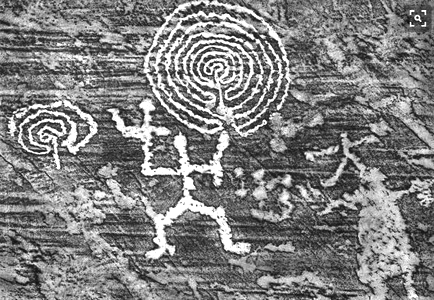
Labyrinths

Labyrinth petroglyph found at Val Camonica, Italy, dated to 8000 BCE.
The architectural idea of an elaborate and confusing structure designed to hold in a monster (even death itself) to be vanquished by a folk hero is universal to many ancestral traditions:
1. Petroglyph, Val Camonica, Italy, (c.8000 B.C.E.)
2. Etruscan Labyrinth Tomb, Poggio Cajella. Labyrinthine Cemetery, (c. 550 B.C.E.)
3. Chakra Vyuha Labyrinth (pre-900 B.C.E.)
4. Labyrinth from Roman Mosaic (c.100 C.E..)
5. Pima and Tohono O'Odham Man Walking in Maze (c.1900 C.E.)
6. Minos ancient Greek myth (pre- 600 B.C.E.) or Hopi Labyrinth (unknown origin date).
7. Crete House of the Double Axe Labyrinthm (c.1200 B.C.E.)
Data for CG modesl:
1. Mathews, W.H., 1922. Mazes and Labyrinths, A General Account of their History and Development, Long- mans, Green and Co. London.
( https://www.gutenberg.org/files/46238/46238-h/46238-h.htm#Page_137 ).
2. http://www.sacred-texts.com/etc/ml/index.htm
3. http://gwydir.demon.co.uk/jo/maze/index.htm
4. https://en.wikipedia.org/wiki/Labyrinth





